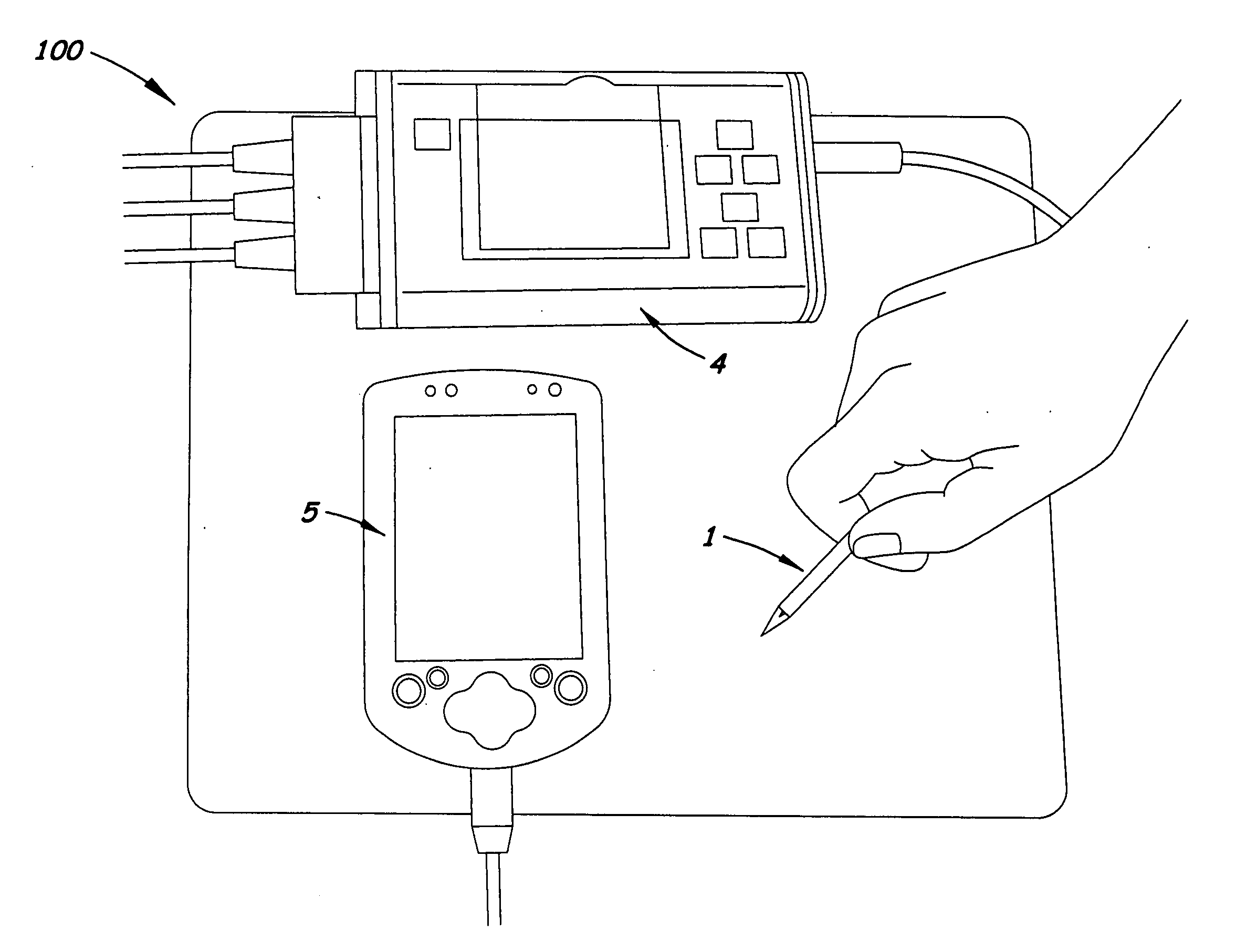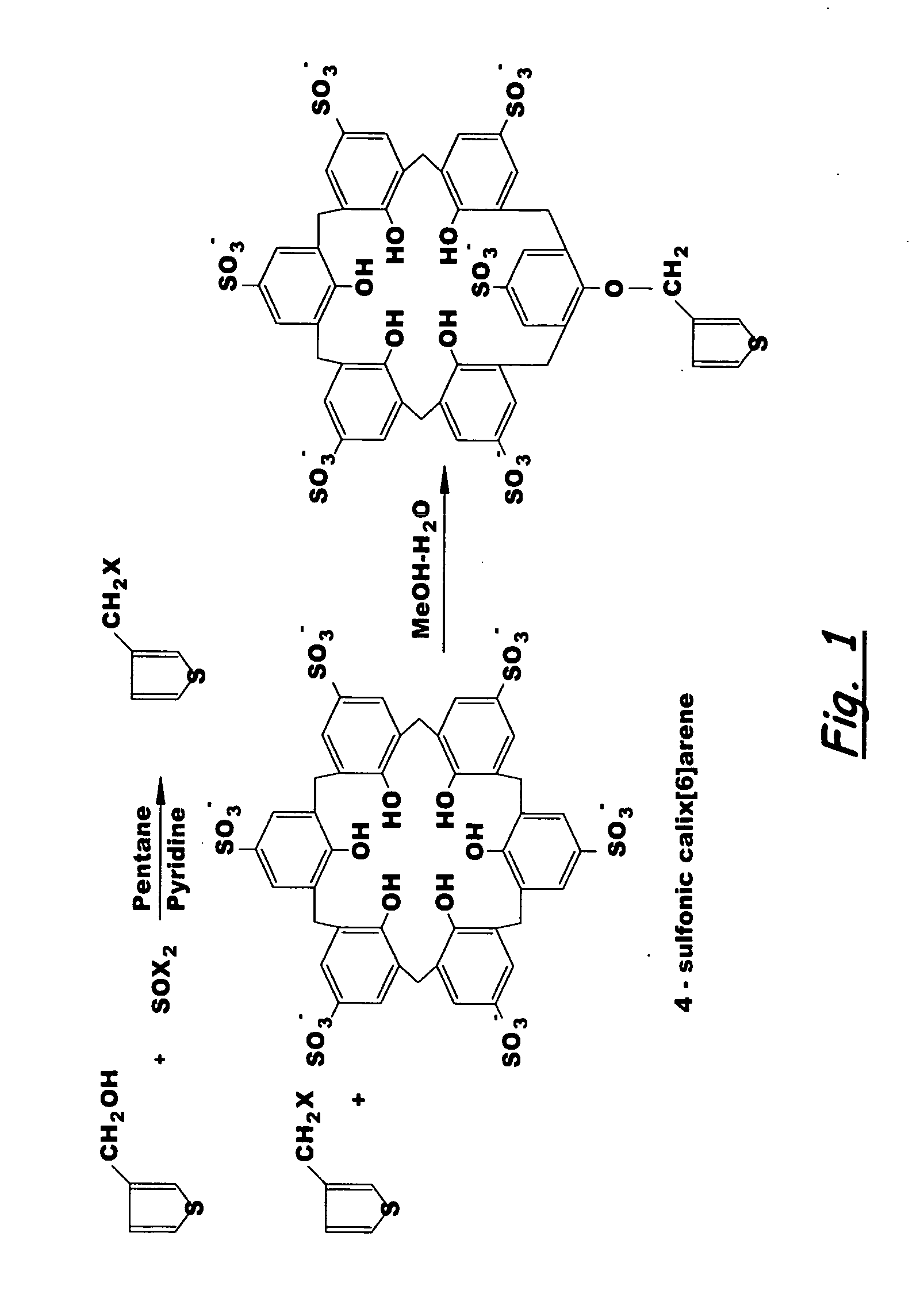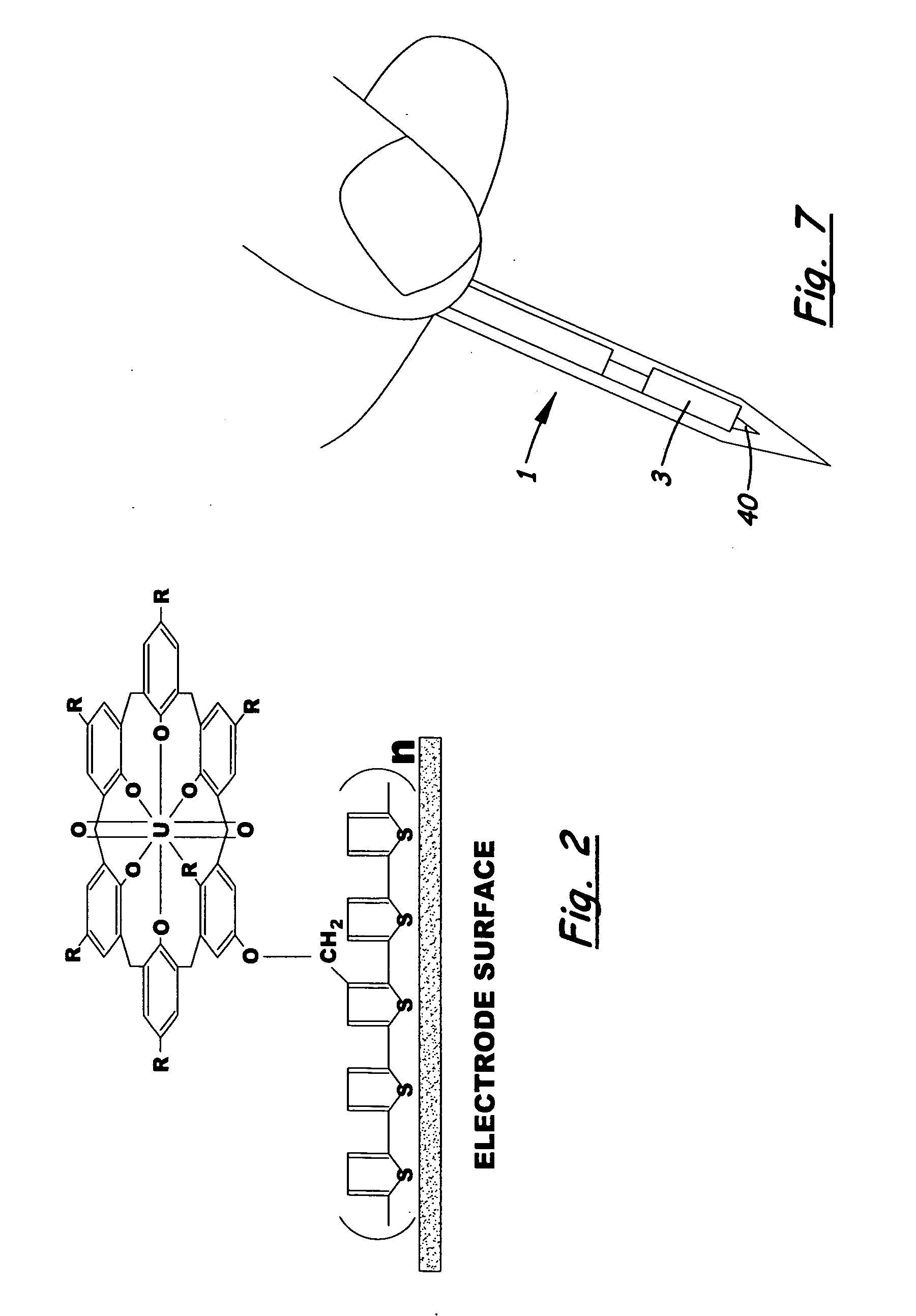Field portable electrochemical sensor for uranium and other actinides
a field-portable, electrochemical sensor technology, applied in the direction of liquid/fluent solid measurement, material electrochemical variables, instruments, etc., can solve the problems of not detecting alpha-emitters such as uranium and plutonium, methods that detect radiochemical signals of nuclear materials, and unsuitable container screening
- Summary
- Abstract
- Description
- Claims
- Application Information
AI Technical Summary
Benefits of technology
Problems solved by technology
Method used
Image
Examples
worked example
[0088]FIGS. 22-26 illustrate data from an electrode made according to an embodiment of the invention that was tested in aqueous solutions containing a wide range of UO22+ concentrations, in aqueous solutions containing a range of ThO2+, and in an aqueous solution containing both uranium and thorium. The electrode used for these tests was made according to the synthesis of FIGS. 3-6.
[0089] The data from FIGS. 22-24 was obtained from uranium ion solutions containing 0.1 M KNO3, as an inert electrolyte, with UO22+ (NO3)2 concentrations ranging from 0.1 ppb up to 1000 ppm. I vs. E curves (current vs. voltage) curves resulting from voltage sweep were obtained, and the data at −0.5 volts was plotted, yielding the adsorption isotherm of FIG. 22. The data at the low concentrations is plotted in FIG. 23, and the data over the entire range is plotted as current vs. Log[UO22+ concentration, ppb]. The data confirms excellent sensitivity to concentration of the UO22+ ion in aqueous solution. Fr...
PUM
 Login to View More
Login to View More Abstract
Description
Claims
Application Information
 Login to View More
Login to View More - R&D
- Intellectual Property
- Life Sciences
- Materials
- Tech Scout
- Unparalleled Data Quality
- Higher Quality Content
- 60% Fewer Hallucinations
Browse by: Latest US Patents, China's latest patents, Technical Efficacy Thesaurus, Application Domain, Technology Topic, Popular Technical Reports.
© 2025 PatSnap. All rights reserved.Legal|Privacy policy|Modern Slavery Act Transparency Statement|Sitemap|About US| Contact US: help@patsnap.com



